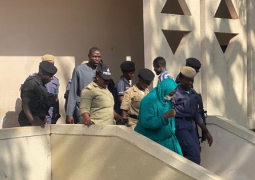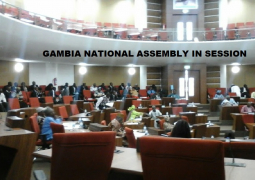The convergence held at a local hotel in Senegambia was also attended by officials of the Central Bank of The Gambia, representatives of financial institutions and farmers association and as well officials of the Roots project.
The Roots project development objective is to increase agricultural productivity and access to markets for enhanced food security, nutrition, and resilience for family farms and farmer organisations. The 80 million U.S dollar project, which was launched recently is the biggest ever agricultural project in the country and would be implemented for a period of six years in all administrative regions of the country.
The project components also include agricultural productivity and adaptation to climate change; access to market and project management, institutional development, and citizen engagement.
Speaking at the forum, Mamour Alieu Jagne, project director for Roots underscored the significance of the forum, adding: “Our gathering here is to exchange views and ideas and experiences about microfinances and their performance at the rural level. In particular, Roots is interested in improving savings and services of financial institutions especially at the rural level.”
The Roots project, he added, is interested because they have several facilities including their matching grants which require counterpart funding from the beneficiaries, saying “sometimes to support the beneficiaries, it’s necessary to have counterpart funding, thus it has to work through finance institutions. They can’t benefit from the services from financial institutions unless they are backed, thus one of our aspects is improving saving capacities.”
Alieu Jagne further added: “We are here primarily to hear from the microfinancial institutions on what they are doing at the rural level when it comes to microfinancial services about what are your experiences, what are our challenges and what are your level of outreach at this stage. At the level of Roots, we can also go to the drawing board in order to better inform about how best to move this important component of the project,” he posited.
“Our business development officer will give you an overview of roots’ interest in microfinance services institutions. We also want you to give us practical experiences on where you are, especially on your challenges and how you think you can work with the Roots project in improving savings capacity.”
Fatoumata Sanyang, business development officer and head of component 2 of the Roots Project, while presenting on Access to Finance, said: “Rural communities are highly underserved. Traditionally, formal financial institutions avoid or fail to offer sustainable services in rural areas.”
She continues: “Transaction costs in rural areas, especially in remote areas are high due to lack of infrastructure, small coverage loan amounts. This makes financial services expensive.”
Commenting on improving savings capacity through credit union, she said, the project will partner with NACCUG, the apex body of the Credit Unions, to improve both the participation of smallholder producers in Credit Unions and their savings capacity, claiming that the project will organise yearly community sensitisation sessions in each region with a view to promoting savings and raising awareness on credit union.
Read Other Articles In Headlines

Police officer advised me not to go in public – alleged PIU shooter says
Dec 4, 2024, 10:51 AM




